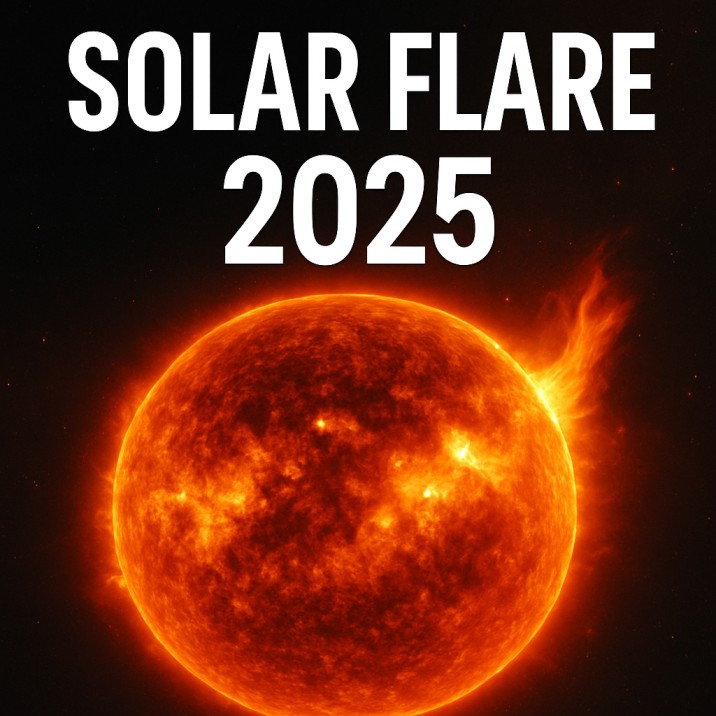
What Is a Solar Flare?
A solar flare is a sudden, intense burst of radiation from the Sun’s surface, caused by the release of magnetic energy. It emits X-rays and ultraviolet radiation, which can affect Earth’s communication systems and power grids.
Solar flares are ranked by size: X-class (strongest), M-class, and C-class. Large X-class flares can even impact satellite operations and cause GPS disruptions.
Solar Flare 2025 – What to Expect
-
Predicted Activity: High – approaching the peak of Solar Cycle 25
-
Potential Date of Major Flare: Unpredictable (Real-time updates required)
-
Next Probable Event: Between July and October 2025
-
Watch Window: Solar storms often spike around equinoxes
Real-time Alerts: NOAA Space Weather Prediction Center
Will There Be a Solar Flare Tomorrow?
Solar flares can’t be predicted like weather. However, space agencies like NASA and NOAA track solar activity in real-time.
To check if a solar flare is expected tomorrow or today, visit:
⏰ What Time Is the Solar Flare Today?
Solar flares don’t follow human clocks. But when one erupts, it reaches Earth in minutes. Solar wind effects (geomagnetic storms) can arrive 18–36 hours later.
For exact timing:
✅ Visit the Live Solar Flare Monitor
🚨 When Is the Solar Flare Going to Hit Earth?
A solar flare alone doesn’t “hit” Earth. But if it’s accompanied by a Coronal Mass Ejection (CME) directed at Earth, it can cause:
-
Geomagnetic storms (G1 to G5)
-
Auroras in unusual places (like Texas, Florida, or Europe)
-
Disruptions in satellites, GPS, aviation, and radio
NASA and NOAA provide impact timelines after CME detection.
Solar Flare Meaning & Scientific Insight
-
“Solar flare” means an explosive burst of solar radiation
-
They’re linked to sunspots — cooler, highly magnetized areas on the Sun
-
Flares often occur near active regions during the Sun’s 11-year cycle
We are near the peak of Solar Cycle 25 (2024–2025), which means more intense and frequent flares are likely.
Solar Flare Effects on Humans
🔹 Direct exposure to a solar flare’s radiation is blocked by Earth’s atmosphere, so people on the ground are safe.
But it can affect us indirectly:
-
Disruption of navigation systems (airlines & ships)
-
Power grid blackouts (like the 1989 Quebec blackout)
-
Astronaut health risks in space
-
Radiation exposure on high-altitude polar flights
Precaution: Airlines often reroute flights during strong solar events.
Solar Flare News & Warnings
-
NOAA issues space weather alerts at: NOAA Alert Portal
-
NASA Heliophysics Division publishes flare data regularly: https://heliophysics.nasa.gov
Latest headlines show a rising trend in solar activity, with multiple M-class and X-class flares in 2025.
Poem on Solar Flare
“A burst from the Sun, a flare in the sky,
Lighting the cosmos as seconds pass by.
Silent yet mighty, with power untamed,
Earth feels the echo, though none can be blamed.”
Use this in your blog for emotional engagement or educational content.
Solar Flare 2025 Date (Predicted Windows)
| Month | Risk Level | Notes |
|---|---|---|
| July 2025 | High | Solar maximum peak |
| August | Moderate-High | Increased CME risk |
| September | High | Equinox effect |
| October | Moderate | Possible geomagnetic activity |
❓FAQs About Solar Flares
Q1. Are solar flares dangerous to humans?
Not directly on Earth. Radiation is absorbed by our atmosphere.
Q2. Can solar flares be predicted?
Not exactly. We can monitor sunspot activity but can’t forecast flares with precision.
Q3. What should I do during a solar flare?
Follow space weather alerts. Avoid polar flights and prepare for possible GPS or internet slowdowns.
Q4. Can solar flares cause blackouts?
Yes, strong flares with CMEs can trigger geomagnetic storms that damage power grids.



